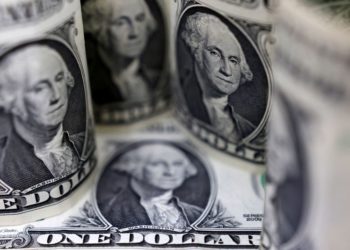There may be a straightforward solution for another kind of “lock-in effect” paralyzing the nation’s housing market: fix the tax code.
Recent analysis from Moody’s Analytics, led by Chief Economist Mark Zandi and Deputy Chief Economist Cristian deRitis, points directly to outdated capital gains tax caps as the culprit that is keeping millions of homes off the market and out of reach for families who need them most.
Shop Top Mortgage Rates
Powered by Money.com – Yahoo may earn commission from the links above.
According to the report, the problem starts with too many empty-nest seniors “locked in” to homes that no longer fit their needs. But instead of selling and downsizing to a smaller home, the prospect of steep capital gains taxes keeps them in their bigger homes.
The problem is especially acute in high-cost metro areas, where decades of property appreciation means selling even a modest home can trigger a six-figure tax bill. This “misallocation” in the housing market results in a “logjam” where nearly 6 million older Americans reside in houses far larger than necessary, while growing families are crammed into spaces that are too small and millions of young households stay stuck in rental limbo.
This lock-in effect, which is separate from the one caused by high mortgage rates, stems from the Taxpayer Relief Act of 1997, which introduced a capital gains exclusion of $250,000 for single filers and $500,000 for married couples. But these thresholds haven’t budged in almost 30 years. If indexed to home price growth, today’s exclusions would be $885,000 for individuals and $1.77 million for couples. Instead, the thresholds remain static, and more homeowners face massive taxes for moving, especially in states like California and Florida.
In an America full of what UBS calls “everyday millionaires” — a phrase that applies to lots of Americans whose inflated assets make them wealthy on paper, but quite average in lifestyle — lots of people can’t afford to pay the taxes on their real-estate nest eggs.
Zandi and deRitis argue the most direct remedy is to index the exclusion caps to reflect either inflation or actual home price growth. Raising or even eliminating these caps would immediately release pent-up inventory, helping empty nesters downsize and making more family homes available.
Take the hypothetical example of a widow with a 2,800-square-foot home, the authors write: she faces capital gains of $750,000, and after her $250,000 exclusion, she would pay taxes of more than $100,000 at combined federal and state rates. That represents over 20% of her downsizing proceeds.
“The disincentive to sell is strong,” they write, and she would naturally favor the alternative of living in the house until she dies. “Her heirs would inherit the home on a stepped-up cost basis, avoiding the capital gains tax altogether.”
The Congressional Research Service has estimated that capital gains taxes on the sales of homes exceeding the caps generate $6 billion–$10 billion a year in federal revenue. But changing the tax code doesn’t have to blow a hole in government budgets. Zandi’s analysis suggests much of this could be offset by other tax streams if turnover rises.
Moody’s found that greater housing turnover would also boost labor mobility, one of the keys to regional economic growth. When people can move for jobs, metro areas with more housing transactions see significantly higher employment and gross product growth. Increased sales generate new revenue for local governments through transfer and property taxes, while additional commissions and remodeling purchases pump billions into the economy.
Right now, much of the tax burden falls on middle-income owners in pricey regions—often after a life crisis like divorce or the death of a spouse—and not on the wealthy, according to the report. That’s because savvy high earners have resources to sidestep taxes entirely. Indexing or eliminating caps would shift the burden from those least able to pay and smooth market frictions hurting families of all ages.
And while some worry that changing the exclusion could flood the market, Moody’s analysis finds that even a 25% spike in listings would only restore sales to normal, pre-crisis levels. Zandi and deRitis suggest a time-limited adjustment could “jump-start” the market without destabilizing prices. They also note significant compliance savings for taxpayers and the IRS, as millions would no longer need to track decades’ worth of paperwork.
Meanwhile, the number of first-time home buyers has shrunk to a historic low, and they are growing older than ever, hitting a median age of 38. As of July, more senior citizens were actively buying homes than Gen Z and millennials. In April, Jessica Lautz of the National Association of Realtors told Fortune that boomers were “dominating” the housing market, “often purchasing their next homes with cash.”
Zandi isn’t alone in decrying how stuck the housing market has become. Meredith Whitney, the so-called “Oracle of Wall Street,” calculates that baby boomers now own over 54% of U.S. homes (up from 44% in 2008), and 79% are mortgage-free.
“This has made it easier for seniors to hold on to their homes by tapping into some of this built-up equity,” she warned this month. “And growth in such funding will be a major theme for the US economy in the next three to four years.”
This story was originally featured on Fortune.com
The post Your boomer parents are probably living in a house too big for them. They’re frozen in place because of taxes, top economists say appeared first on Fortune.




